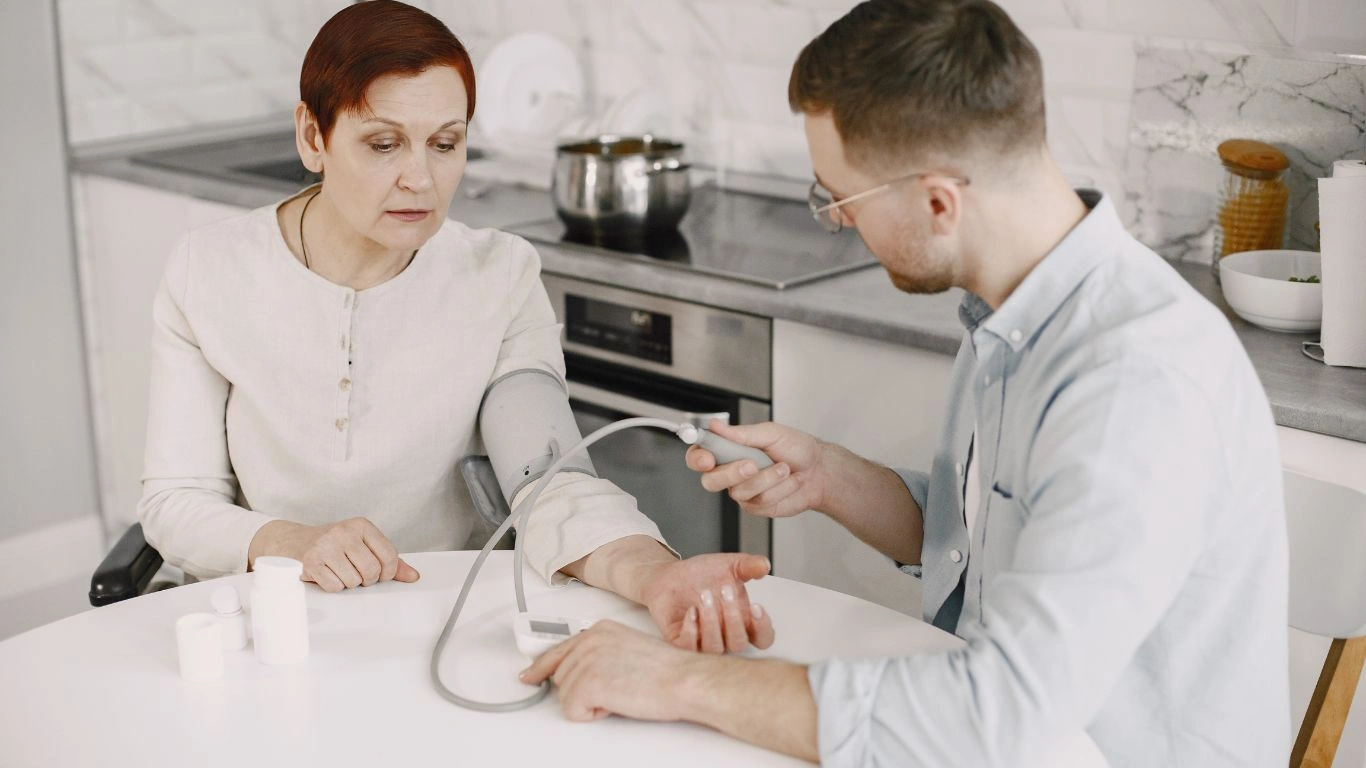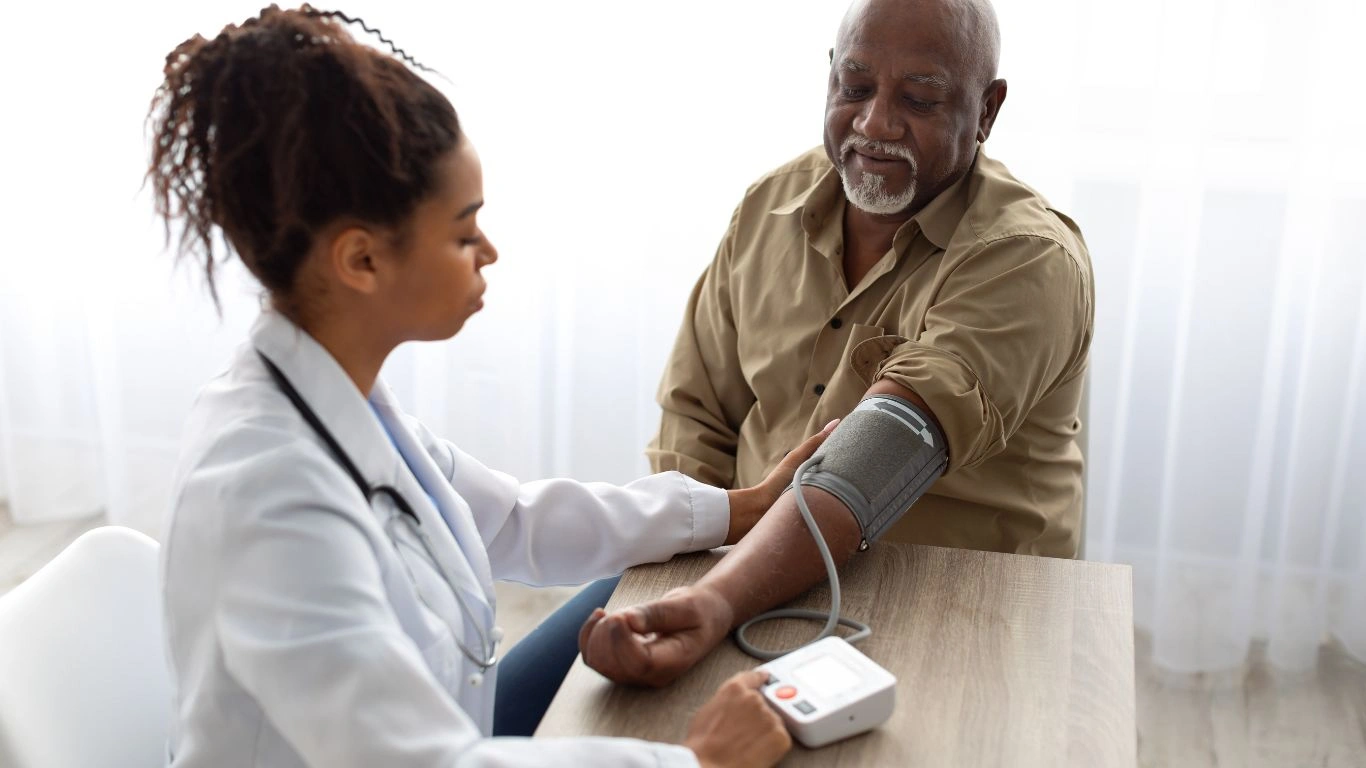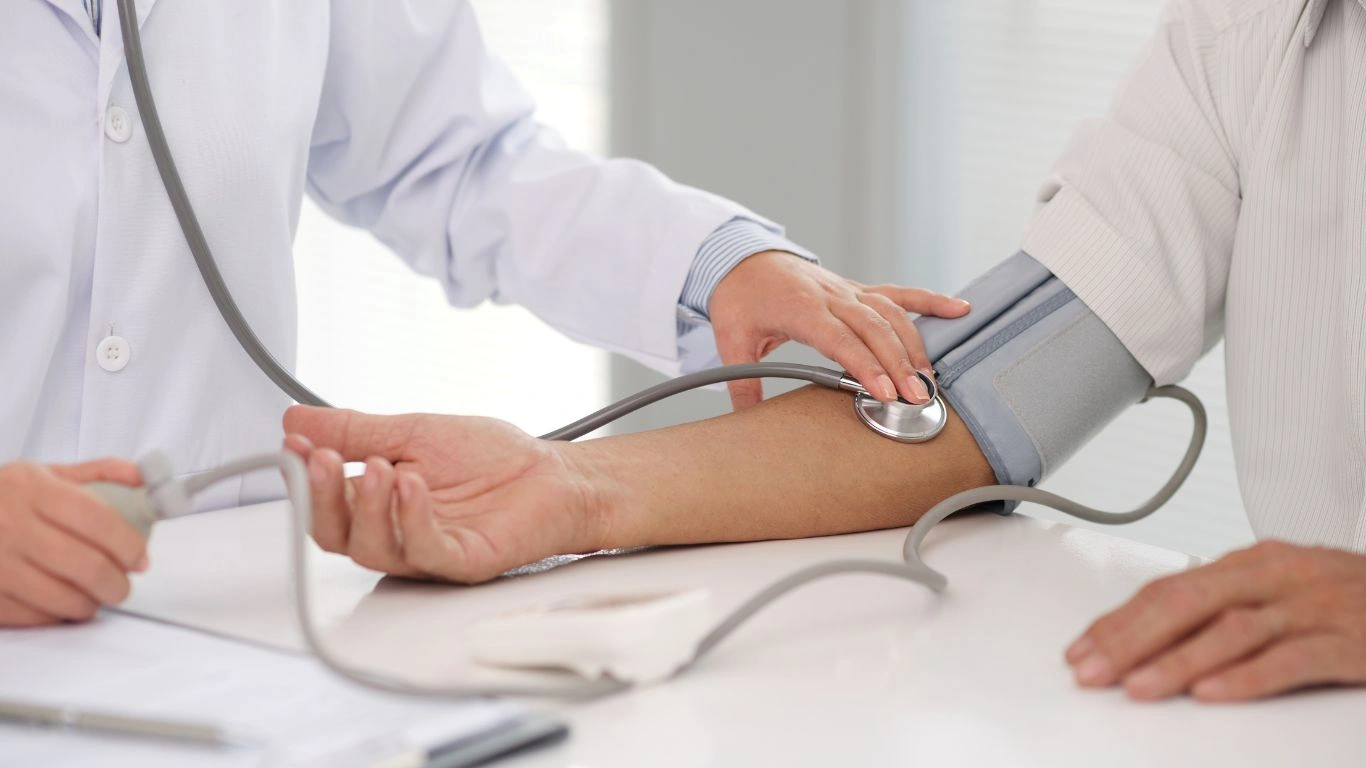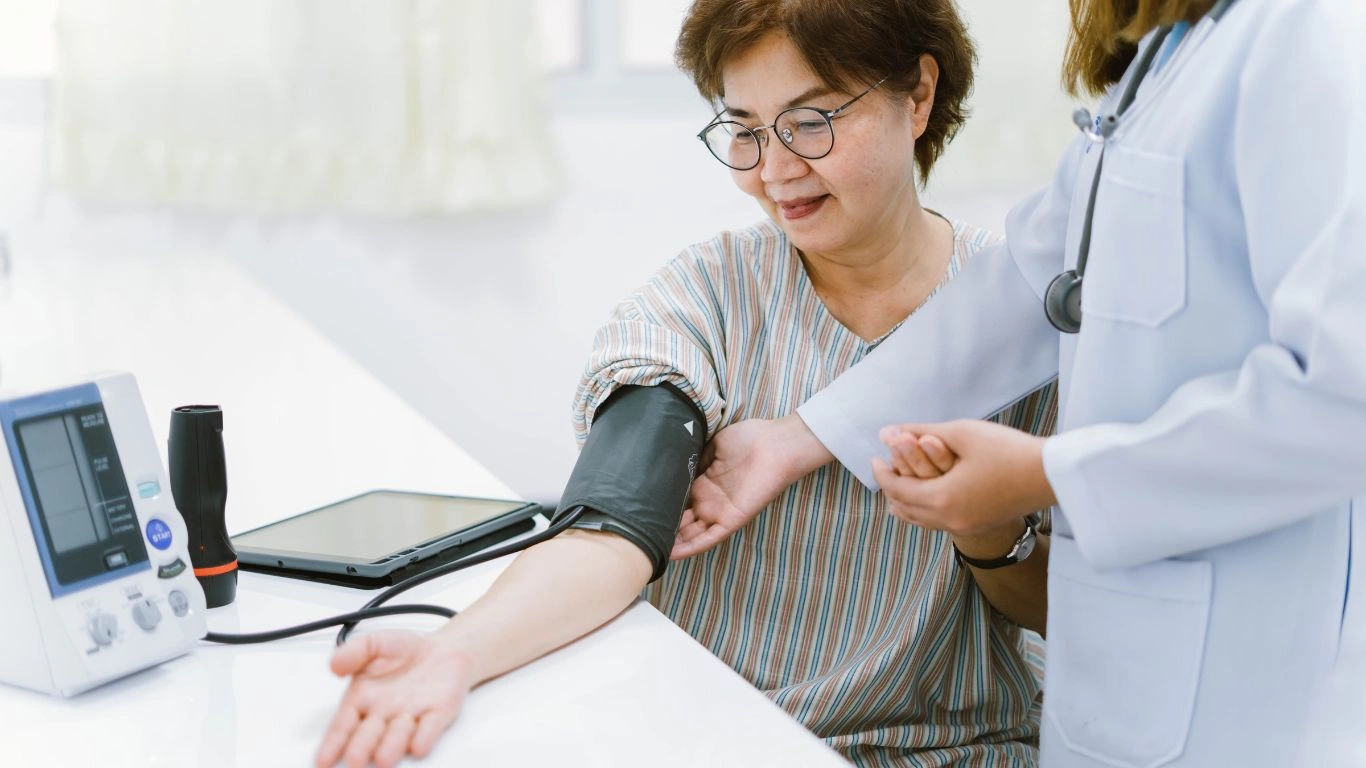Worst Foods That Raise Blood Pressure & What to Eat Instead
When it comes to managing high blood pressure, what you eat matters—a lot. Trust me, I’ve seen patients make incredible progress simply by tweaking their diet. While we often focus on what foods can help lower blood pressure, it’s just as important to know which foods to avoid for better blood pressure control. Some seemingly harmless meals could be quietly pushing your numbers up, making it harder for medications or lifestyle changes to do their job. Let’s dive into the biggest culprits that could be sabotaging your blood pressure goals.
1. The Salty Trap: How Sodium Sneaks Into Your Diet

We all know salt is bad for hypertension, but you’d be surprised where it hides. The American Heart Association recommends keeping sodium intake below 2,300 mg per day (ideally 1,500 mg for people with high blood pressure), yet many of us blow past that with just a single meal.
Common High-Sodium Foods to Avoid
- Processed meats – Think deli meats, bacon, sausage, and even “healthy” turkey slices. They’re packed with sodium for preservation.
- Canned soups and broths – Even those labeled “low sodium” can still be too high for someone with hypertension.
- Fast food and takeout – Most restaurant meals are loaded with salt to enhance flavor.
- Frozen dinners – They may be convenient, but most are sodium bombs.
- Cheese – While delicious, cheese often contains a surprising amount of sodium.
I once had a patient who thought switching from table salt to sea salt would make a difference. The truth? It’s still salt. The best approach is to flavor food with herbs, garlic, lemon juice, or salt-free spice blends instead.
2. Sugary Surprises: The Hidden Danger of Sweet Foods

It’s not just salt—sugar is another silent blood pressure booster. Excess sugar contributes to weight gain, insulin resistance, and inflammation, all of which can raise blood pressure over time.
Worst Sugary Offenders
- Sodas and sweetened drinks – A single can of soda can have more sugar than the recommended daily limit.
- Packaged snacks – Many granola bars, flavored yogurts, and cereals are loaded with hidden sugars.
- Pastries and desserts – While an occasional treat is fine, regular indulgence can wreak havoc on blood pressure.
- Condiments – Ketchup, barbecue sauce, and even salad dressings can have as much sugar as a candy bar.
I had a client who was eating “healthy” yogurt every morning, not realizing it contained over 20 grams of sugar per serving! Switching to plain Greek yogurt with fresh fruit made a huge difference in her blood pressure readings.
3. The Caffeine Conundrum: Is Your Morning Cup Hurting You?

Many of us rely on caffeine to start the day, but for those with high blood pressure, too much caffeine can cause temporary spikes. While it doesn’t directly cause long-term hypertension, it can still be problematic for some individuals.
How to Manage Caffeine Intake
- Limit coffee to one or two cups a day, especially if you’re sensitive to caffeine.
- Opt for decaf or herbal teas as an alternative.
- Be cautious with energy drinks, as they often contain both high caffeine and excessive sugar.
One of my friends cut back on coffee and immediately noticed fewer blood pressure spikes throughout the day. If you’re unsure how caffeine affects you, try monitoring your numbers before and after drinking it to see if there’s a connection.
4. The Hidden Dangers of Trans Fats and Processed Oils

If there’s one thing I always tell my patients to cut from their diet, it’s trans fats. These artificial fats do more than just raise bad cholesterol—they also increase inflammation, which is bad news for your arteries and blood pressure.
Common Sources of Trans Fats
- Fried fast food – Think French fries, fried chicken, and onion rings. The oils used in deep frying are often loaded with trans fats.
- Packaged baked goods – Many store-bought cookies, cakes, and pastries still contain these harmful fats.
- Margarine and shortening – Once thought to be a healthier alternative to butter, margarine is actually a major culprit in heart disease.
- Non-dairy coffee creamers – Those flavored creamers may be tasty, but they often contain hydrogenated oils.
One of my clients used to start every morning with a store-bought muffin and coffee creamer, thinking it was a harmless routine. But once we swapped out the creamer for almond milk and the muffin for a homemade oatmeal alternative, his blood pressure numbers improved significantly.
5. Alcohol: How Much Is Too Much?

There’s nothing wrong with enjoying a drink every now and then, but if you’re struggling with hypertension, alcohol can be a sneaky contributor to high blood pressure. Not only does it dehydrate you, but it also makes your heart work harder by constricting blood vessels.
Guidelines for Alcohol Consumption
- Stick to moderate drinking—that means no more than one drink per day for women and two for men.
- Avoid cocktails loaded with sugar and sodium—think margaritas, Bloody Marys, and flavored liquors.
- Drink plenty of water alongside alcohol to stay hydrated.
- Choose red wine in moderation—it contains antioxidants that may offer some heart benefits.
I had a patient who loved his nightly whiskey, but after cutting back to just a glass of red wine on weekends, his blood pressure became much more manageable. If alcohol is part of your routine, finding a balance is key.
6. Highly Processed Carbs: The Silent Blood Pressure Spikers

Refined carbohydrates can be just as bad as sugar when it comes to blood pressure. These quickly digesting carbs cause blood sugar spikes, which can lead to insulin resistance, weight gain, and—you guessed it—higher blood pressure.
Refined Carbs to Limit
- White bread and pastries – These are stripped of fiber, making them easy to overeat and causing blood sugar surges.
- Pasta made from white flour – Whole grain or legume-based pastas are much better alternatives.
- White rice – Brown rice, quinoa, or cauliflower rice can be better options.
- Processed cereals – Many “healthy” cereals contain more sugar than a dessert.
A friend of mine swapped her morning white toast and jam for whole-grain toast with avocado, and her blood pressure readings started to stabilize. Small changes can make a big difference.
By avoiding these foods and focusing on whole, nutrient-dense alternatives, you can take real control over your blood pressure. In the next section, we’ll dive into the best foods for keeping blood pressure in check and how to build a heart-healthy meal plan.
Case Studies & Real-Life Examples

Let me tell you about one of my patients, Mark. He was in his late 40s, a busy professional, and had been on blood pressure medication for years. His diet? A mix of fast food, sugary snacks, and late-night convenience store runs. After one particularly alarming blood pressure reading, he decided to make a change.
We worked on eliminating processed foods, cutting back on sodium, and adding more potassium-rich foods. He swapped out his daily bag of chips for a handful of unsalted almonds and replaced his morning sugary cereal with oatmeal topped with berries. Within a few months, his blood pressure had dropped significantly, and his doctor even reduced his medication.
Then there’s Lisa, a 55-year-old woman who thought her vegetarian diet was healthy—until we looked closer. She was eating way too many refined carbs like white rice, pasta, and sugary granola bars. Once she transitioned to whole grains, leafy greens, and lean proteins, her blood pressure improved, and she felt more energetic.
Key Takeaways: What You Need to Remember
- Avoid excess sodium by cutting back on processed foods, canned goods, and restaurant meals.
- Reduce sugar and refined carbs to prevent insulin spikes that can contribute to high blood pressure.
- Limit unhealthy fats like trans fats and processed vegetable oils that cause inflammation.
- Moderate alcohol intake to prevent blood vessel constriction and dehydration.
- Stay hydrated and focus on whole, nutrient-dense foods to support overall heart health.
FAQs
1. Can I ever eat these foods again, or do I have to cut them out completely?
It’s all about balance! While it’s best to limit these foods, occasional indulgence is fine—just be mindful of portion sizes and frequency.
2. What are some quick swaps I can make?
- Replace white bread with whole-grain options.
- Opt for homemade meals instead of fast food.
- Use herbs and spices instead of salt.
- Swap sugary drinks for herbal teas or infused water.
3. How fast can I see improvements in my blood pressure?
Some people notice changes within weeks, especially if they focus on cutting sodium and processed foods. However, long-term improvements require consistent effort.
Bonus: Additional Resources or DIY Tips
- Meal Prep Ideas: Cook in bulk and freeze healthy meals to avoid processed foods.
- Grocery Shopping Guide: Stick to the perimeter of the store where fresh produce, lean proteins, and whole foods are found.
- Mindful Eating: Slow down, chew thoroughly, and listen to your body’s hunger cues.
Appendix
Table: Foods to Avoid vs. Healthy Alternatives
| Foods to Avoid | Healthy Alternatives |
|---|---|
| Processed meats (bacon, sausage) | Lean chicken, turkey, or tofu |
| White bread and pastries | Whole grain bread, oats |
| Sugary cereals | Oatmeal with nuts and berries |
| Fast food | Home-cooked meals with fresh ingredients |
References
- American Heart Association – Heart health and dietary guidelines
- CDC Blood Pressure Guidelines – Research-backed hypertension management
Disclaimer
This article is for informational purposes only and does not substitute professional medical advice. Always consult a healthcare provider before making dietary changes.
Call to Action
Taking control of your blood pressure starts with your plate! Start making these small but impactful changes today. Have any favorite low-sodium, heart-healthy recipes? Share them in the comments below!

Dr. Gwenna Aazee is a board-certified Internal Medicine Physician with a special focus on hypertension management, chronic disease prevention, and patient education. With years of experience in both clinical practice and medical writing, she’s passionate about turning evidence-based medicine into accessible, actionable advice. Through her work at Healthusias.com, Dr. Aazee empowers readers to take charge of their health with confidence and clarity. Off the clock, she enjoys deep dives into nutrition research, long walks with her rescue pup, and simplifying medical jargon one article at a time.






